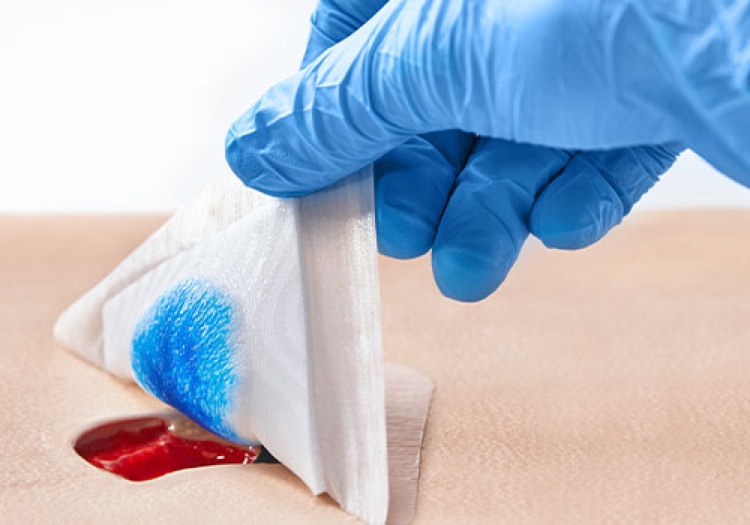WEINHEIM - Freudenberg Performance Materials has developed new prototypes using its silicone coated foam technology for wound care, including a bordered dressing with a silicone adhesive border.
The new developments will be unveiled at this week's Compamed show in Düsseldorf along where the company will outline its complete approach to sustainable woundcare using hydrophilic PU foams and hydroactive nonwovens.
“Sustainability is firmly anchored in Freudenberg Performance Materials’ strategy. That is why we engage in pioneering work to enable our customers in the medical industry to launch more sustainable products on the market,” Dr. Henk Randau, SVP & General Manager Global Business Division Healthcare, said.
Freudenberg offers its healthcare customers two solutions to design sustainable wound plasters. These plasters use bio-based raw materials that allow biodegradation in an industrial composting setting after the product has been used.
M 1701 for traditional woundcare plasters comprises 100% polylactid acid derived from natural resources and offers good woundcare characteristics.
Also available is M 1714 with superior absorption for more challenging wounds, which consists of a mix of bio-based fibres derived from natural sources and exhibits a smooth wound contact layer. The product has been evaluated for industrial compostability and conforms with ISO 13432, which facilitates the application for certificates concerning product biodegradability.
In addition, Freudenberg Performance Materials’ silicone coated foams with their patent-protected technology combine the sustainable aspects with a number of improved features.
Reducing the number of process steps in wound dressing manufacture reduces production complexity, thereby avoiding waste, saving energy and simplifying the supply chain, the company says. At the same time, the solution maintains all the advantages of a pure foam dressing without a silicone layer, such as free swelling and prevention of exudate pooling in the wound bed, while eliminating the disadvantages of solutions with standard silicone adhesive layers. Seen from a nursing perspective, advantages include higher flexibility that enables optimal wound bed contouring and the reduced risk of infection due to the prevention of exudate pooling.
For the first time, FPM is also showcasing the prototypes featuring this technology in the form of a bordered dressing with a silicone adhesive border. The option to select an extra-strong silicone border complements these product benefits. This enables longer wear times, thus generating less waste, as well as offering more effective cleansing results and greater patient comfort.
Also on show will be a new hydrophilic debridement foam which, being soft and flexible throughout, including at the edges, is said to be ideal for cleansing deep and hard-to-reach wounds.
Thanks to its large pores, the foam also easily picks up fibrin coatings and dried exudate and unlike conventional textile construction, there is no risk of fibres being left behind in the wound.
The hydrophilic PU foam also achieves a better cleansing result with reduced pressure, thereby increasing patient comfort.
